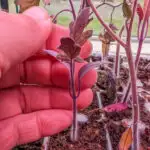
Photo credit: Tracey Besemer
Tomato plants are green. In fact, I’d go so far as to say most of your vegetable seedlings are green.
Thanks, Tracey. I appreciate you pointing out the obvious. What’s your point?
My point is this: knowing tomato plants should be green means it comes as a bit of a shock when you wake up one morning to find that your tomato seedlings are purple.
To be fair, this change usually takes a week or two, but it always seems to be the case that we don’t catch it until we’re staring at purple tomato plants, wondering what happened.
Now, before the panic sets in, your seedlings will be fine.
Believe it or not, this is a common issue that pops up with tomato seedlings. The issues at play are easy to diagnose and even easier to fix. With a few changes, your plants will be a healthy, recognizable green by next week.
Why Purple?
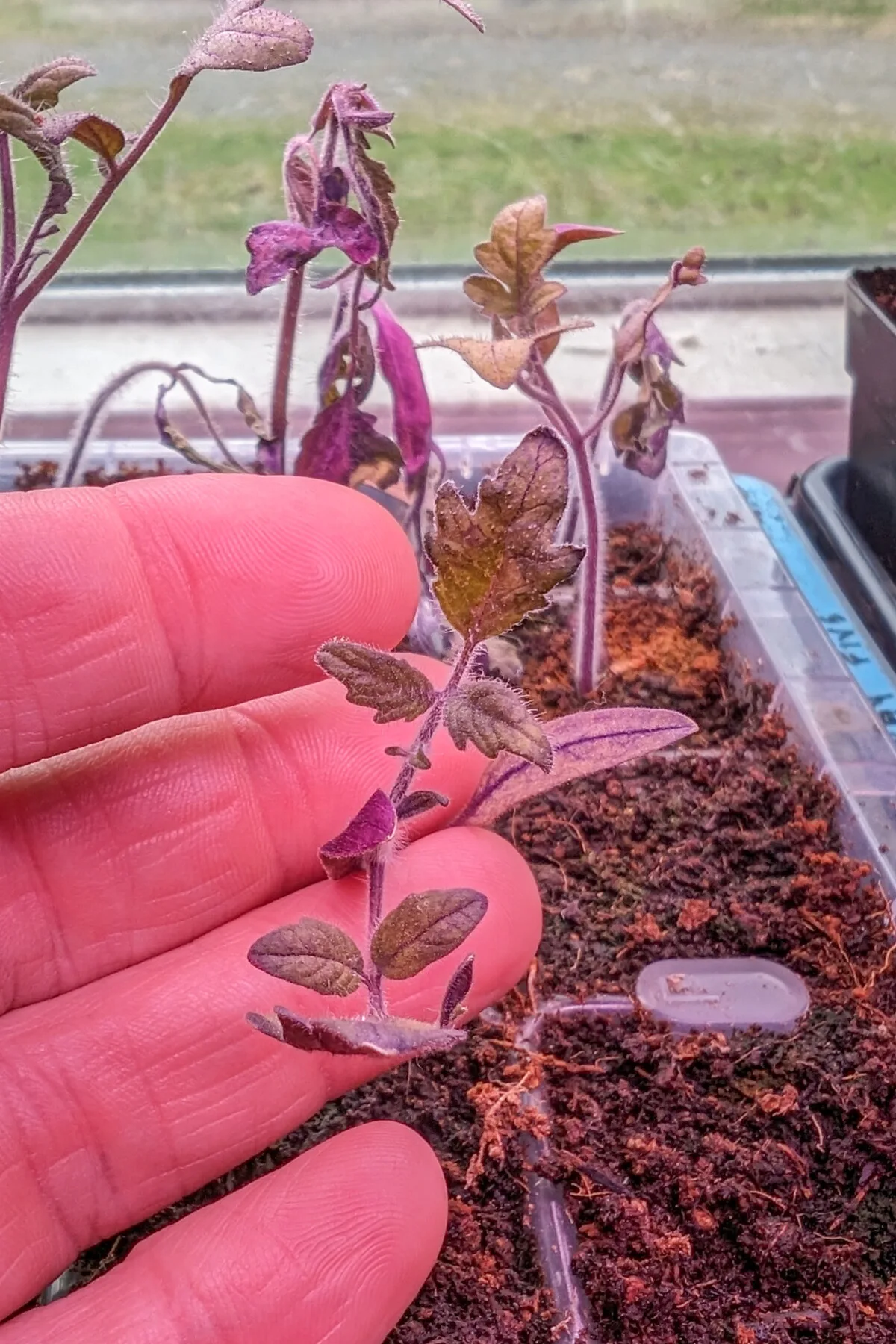
Photo credit: Tracey Besemer
I’m assuming you’re here after making this shocking discovery for yourself. You’ve checked your seedlings and noticed:
- purple stems
- the undersides of the leaves are purple
- the veins on the leaves are purple
- in advanced cases, even the tops of the leaves can begin to turn purple
It all boils down to a lack of nutrients, specifically phosphorous. When plants don’t receive enough phosphorous, they will cope by creating more anthocyanins (the flavonoid responsible for, you guessed it, making purple plants).
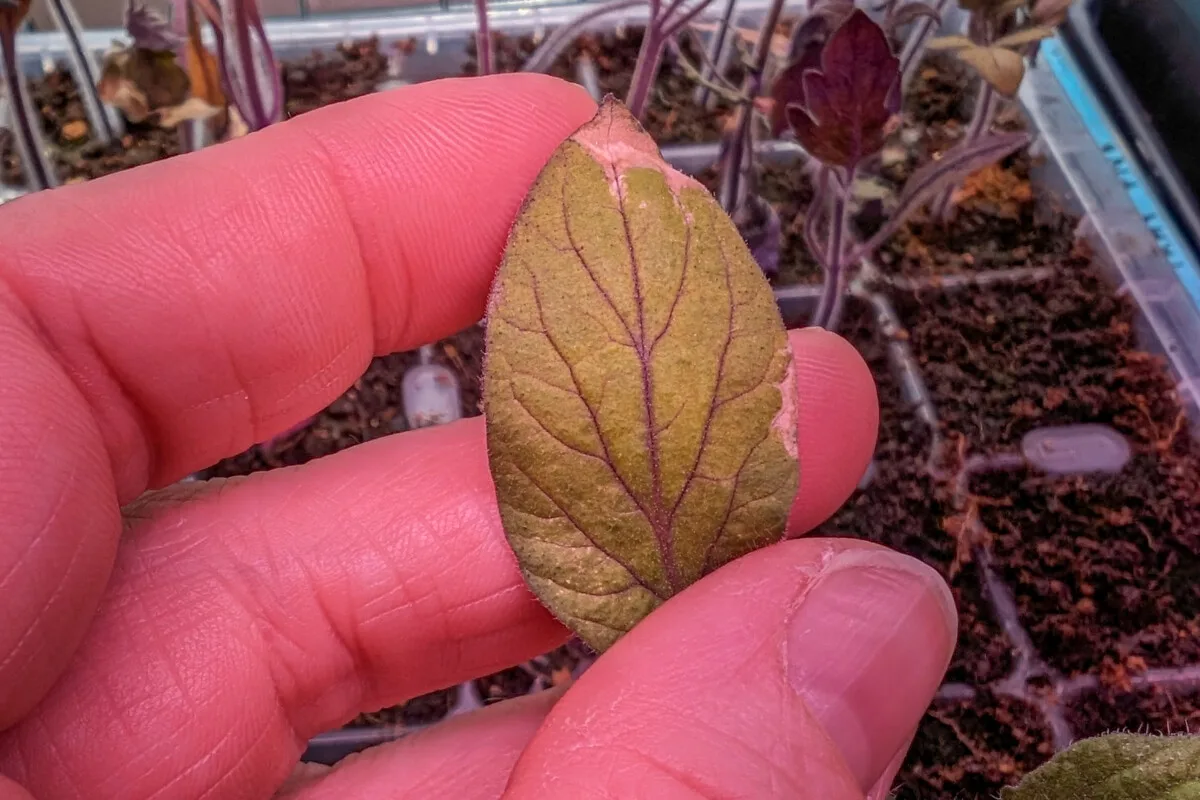
Photo credit: Tracey Besemer
Thankfully, this tell-tale sign lets you know right away that your tomatoes need more phosphorous.
A Few Causes for Nutrient-Deficient Tomato Seedlings
There are a number of reasons why seedlings may be deficient in specific nutrients. Figuring out which one applies to your situation will also provide you with the appropriate fix to remedy the situation quickly.
No Fertilizer
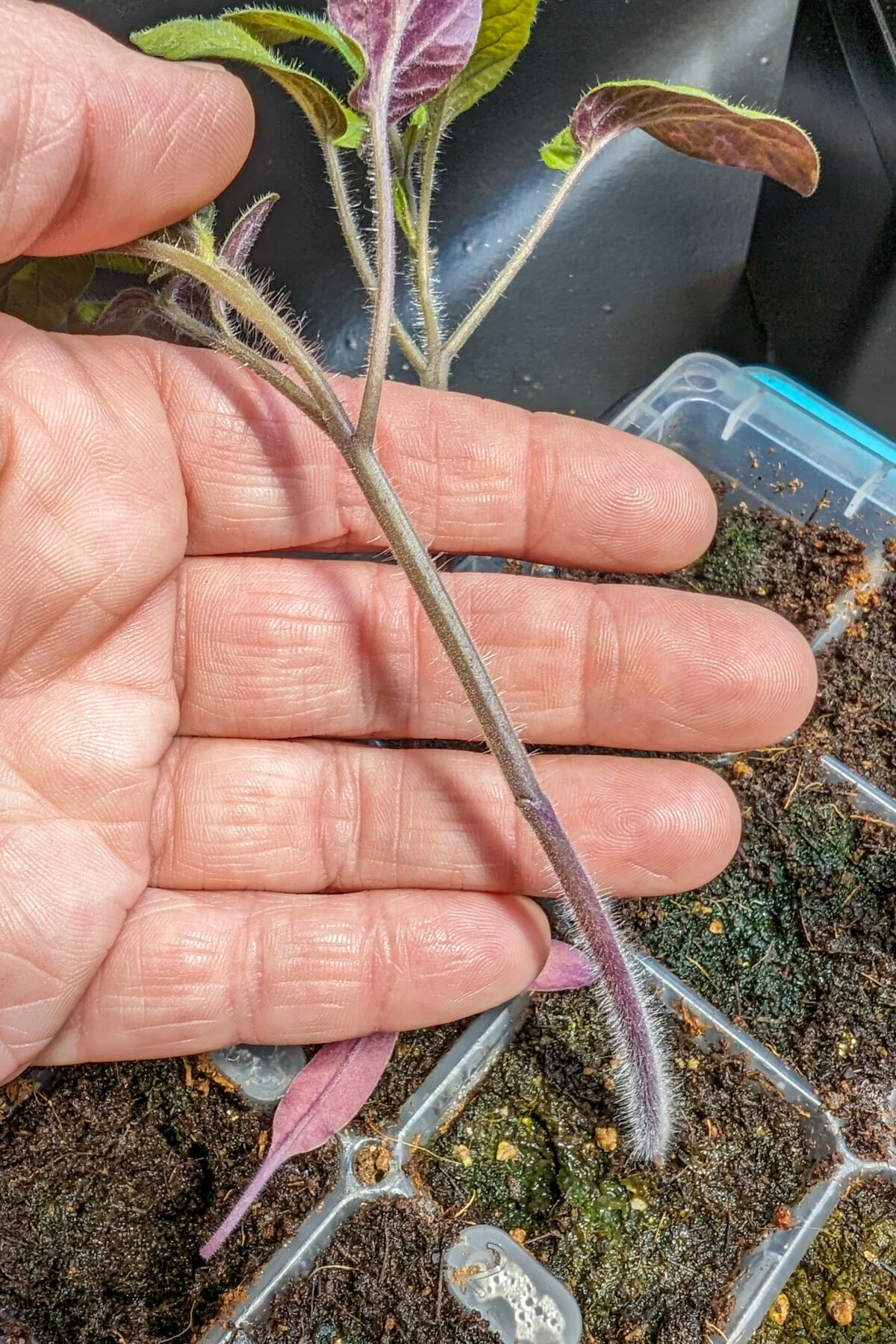
Photo credit: Tracey Besemer
This is the most obvious reason why your seedlings might be lacking. The cotyledon provides new plants with all the nutrients they need to develop from a seed to a seedling. However, once secondary leaves show up, you will need to begin feeding seedlings with a balanced fertilizer to ensure large, healthy plants.
The fix here is simple: feed your green babies. An organic liquid fertilizer with a balanced NPK ratio is the best option for new plants. Start feeding at half-strength.
“But Tracey, I have been fertilizing my seedlings.”
If that’s the case, then it’s more likely the seedlings are unable to use the nutrients you have provided.
The Roots Are Unable to Take Up Nutrients
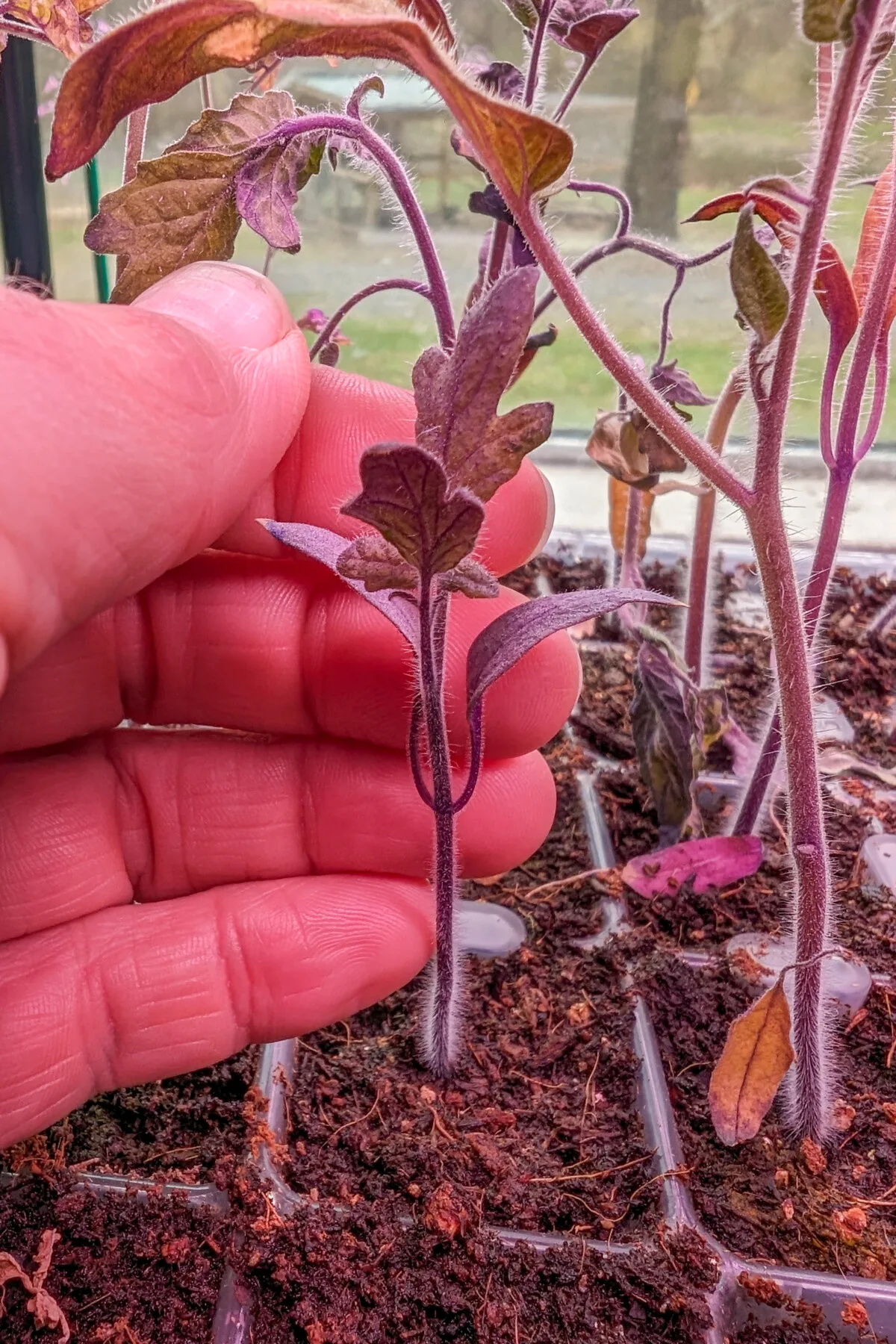
Photo credit: Tracey Besemer
The soil is too cold.
When soil temps fall below 50 degrees, it can slow or even stop the roots of tender tomato plants from being able to absorb nutrients properly. Remember, these are warm-weather plants.
Like many gardeners, I start my seedlings indoors late in the winter, which means my home is still quite cool at night. To keep my plants happy during this critical growth period, I use heated seedling mats under my seedlings. They’re great for germinating seeds and keeping the soil at a consistent temperature, even at night when my house is cool. (Here are the ones I use. They’re great.)
Your plants need to be potted up.
If you start seedlings in tiny seed-starting cells, they need to be potted up pretty quickly. If you let them go for too long, they will become root-bound and essentially stop growing. The seedlings will no longer be able to take up nutrients efficiently due to the inadequate root system.
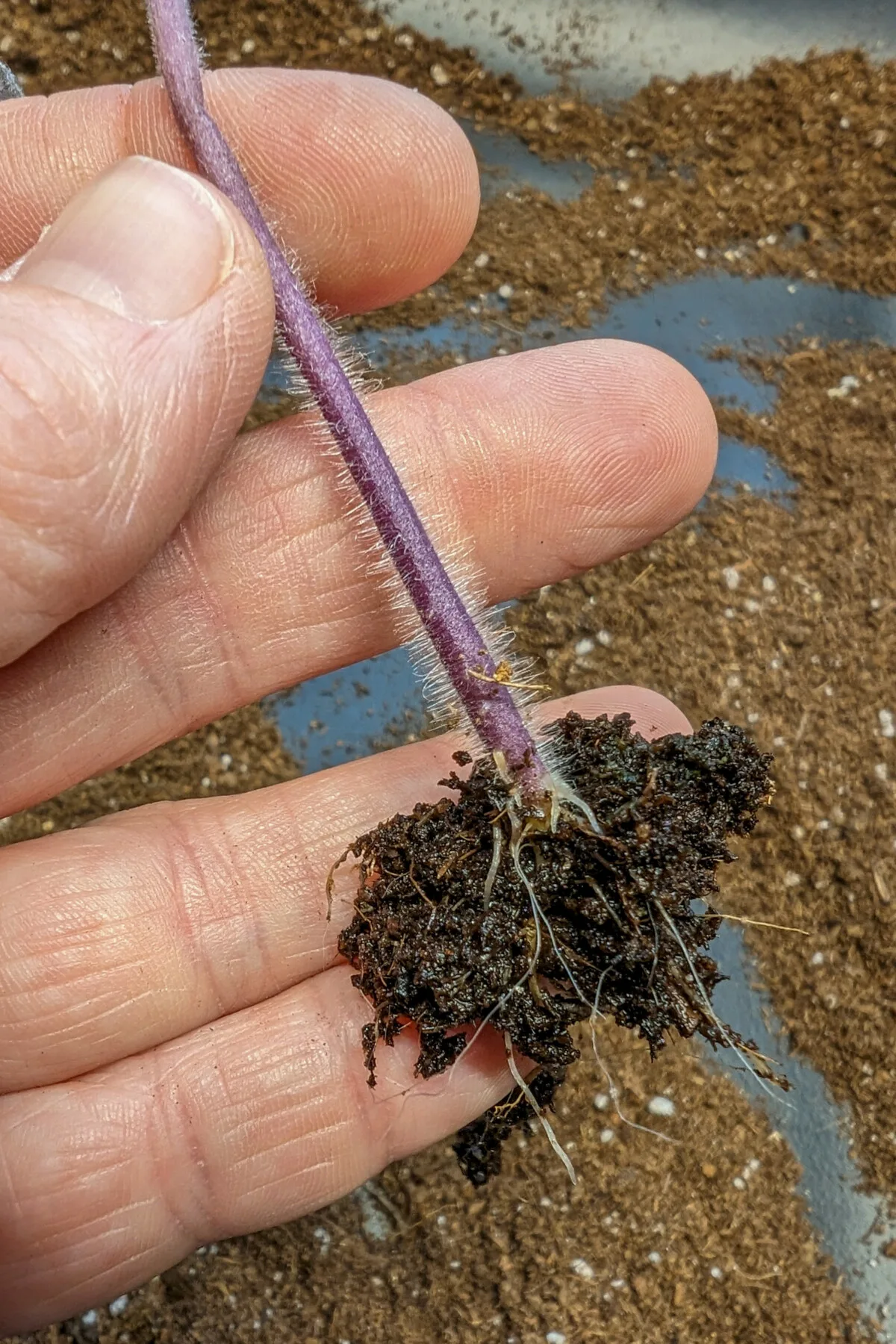
Photo credit: Tracey Besemer
Again, this is an easy fix: simply pot up your seedlings. This will allow them room to form a larger root system.
When In Doubt, Fix All the Issues
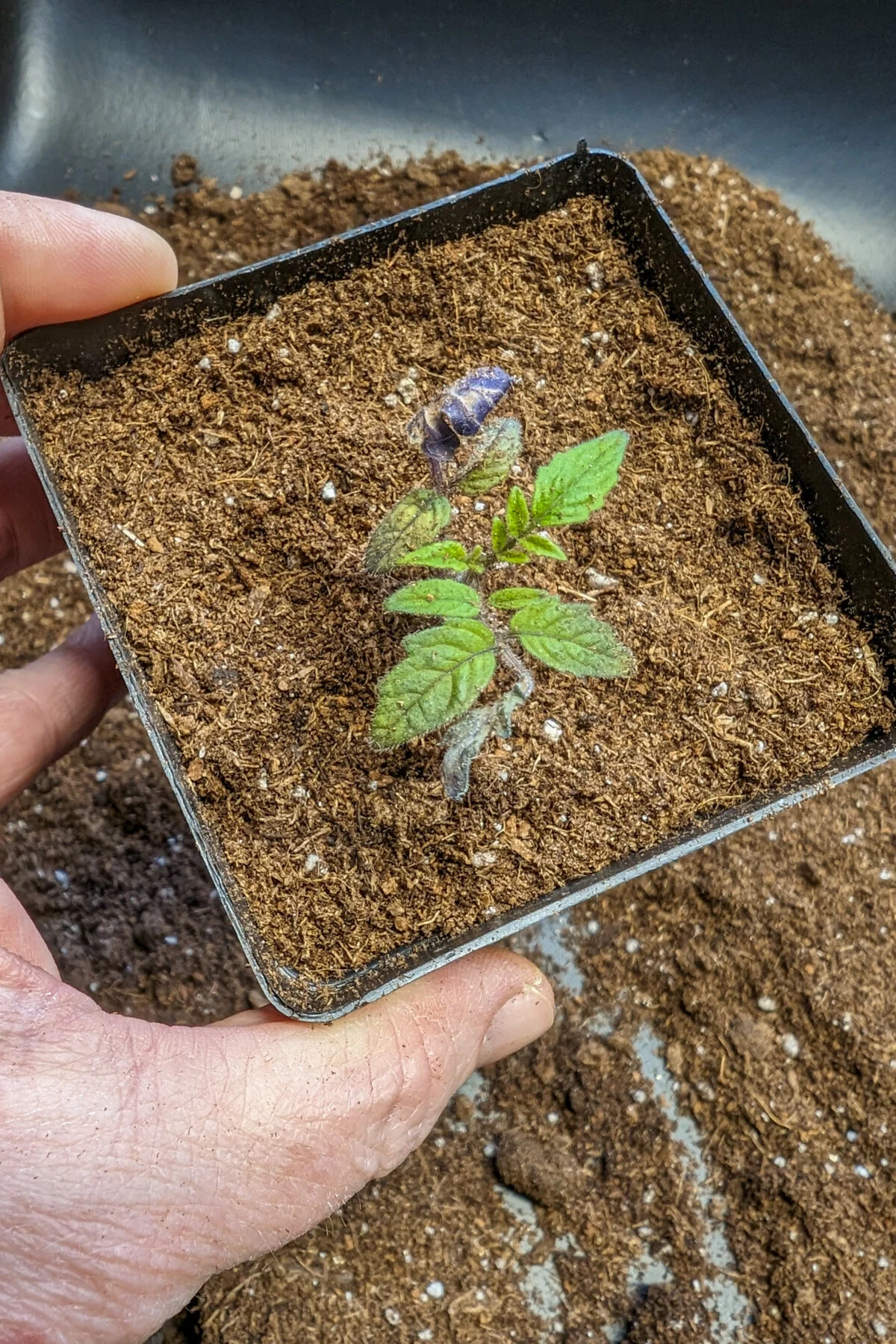
Photo credit: Tracey Besemer
I’ve found the easiest fix is to tackle all of these issues at once. Rather than trying to figure out which scenario could be causing a phosphorous deficiency, it’s easier to eliminate all possible causes.
Repot seedlings into a larger pot and water them well. Include a balanced liquid organic fertilizer at half strength. Then move them to a location that doesn’t fall below 60 degrees at night, or use a seedling heating mat to keep them warm.
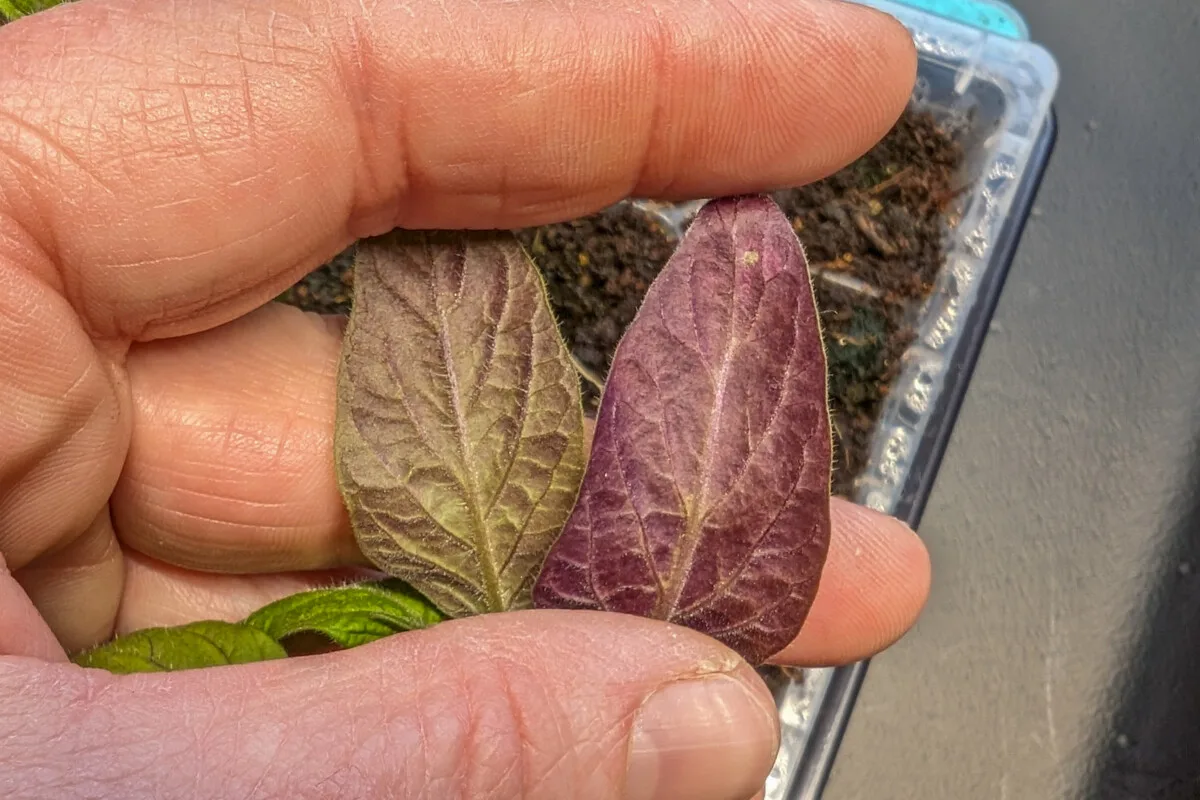
Photo credit: Tracey Besemer
You probably noticed that the issues that cause purple tomato seedlings stem from something preventing the plant from being able to take up nutrients. By fixing the phosphorous issue, chances are, you’ll be fixing more than one deficiency.
It’s quite common in these scenarios for your plants to be deficient in all key nutrients; it just so happens that a lack of phosphorous gives us the most obvious clue.
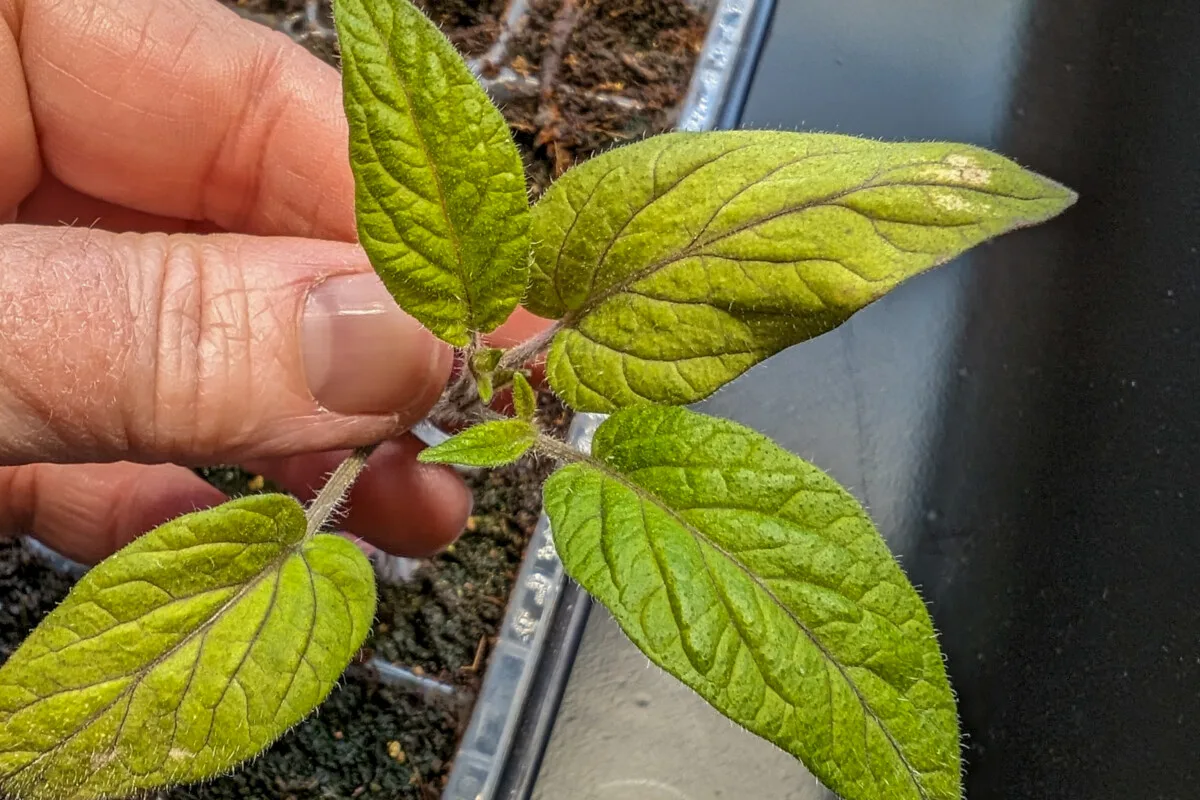
Photo credit: Tracey Besemer
Within a week or so, you’ll be well on your way to healthy, green seedlings once again.

Get the famous Rural Sprout newsletter delivered to your inbox.
Including Sunday musings from our editor, Tracey, as well as “What’s Up Wednesday” our roundup of what’s in season and new article updates and alerts.


